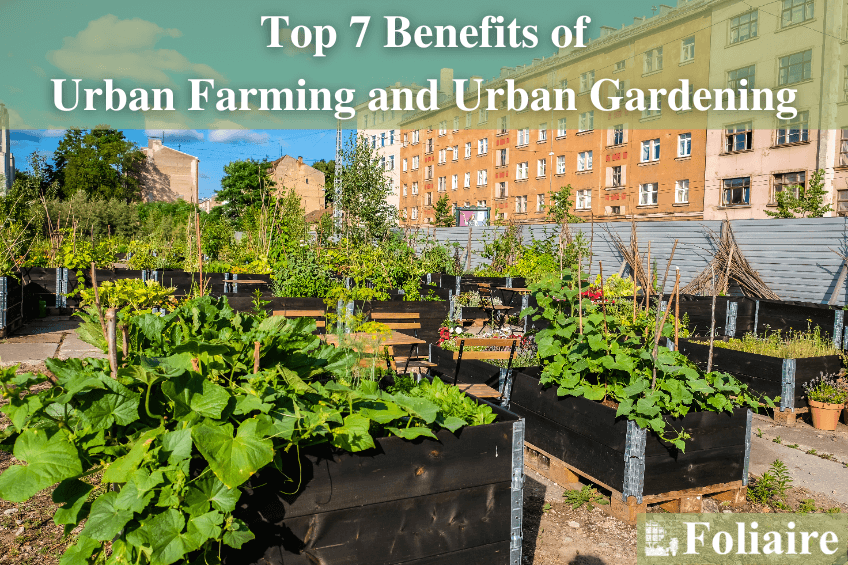Not known Factual Statements About City Blooming
Not known Factual Statements About City Blooming
Blog Article
Top Guidelines Of City Blooming
Table of ContentsThe smart Trick of City Blooming That Nobody is Talking AboutCity Blooming for BeginnersWhat Does City Blooming Do?The Only Guide to City BloomingCity Blooming - Questions
Fascinated in expanding food available in the City of Chicago? Considering beginning a community garden? Modifications to the Chicago Zoning Ordinance enable farming usages like community yards and urban ranches in several parts of the city. Below is a checklist of frequently asked questions concerning the rules and laws that farmers ought to think about when planning a city farming task.
The zoning modification does not modify any kind of various other codes taking care of composting, structure authorizations, purchasing or leasing City owned residential or commercial property, business licenses or ecological contamination. There are existing codes that regulate these concerns and they remain completely effect and might apply to your project. Area yards are commonly possessed or managed by public entities, public organizations or community-based companies and maintained by volunteers.
Urban farms grow food that is planned to be sold, either on a not-for-profit or for-profit basis. Because of their business purpose, metropolitan ranches need a business permit. Yes. A community yard is allowed to offer surplus generate that was grown on website if the sales are accessory or secondary to the garden's primary objective described above.
City Blooming Things To Know Before You Get This
The amount of compost product can not exceed 25 cubic lawns at any provided time according to the standards in 7-28-715 of the City's Municipal Code. Since the soil at most brand-new garden sites needs amending, garden compost, soil, wood chips, or various other products can be obtained to construct or enhance the growing room.

If a structure license is required after that the hoophouse will be thought about an accessory structure. You can learn more regarding the building permit needs by getting in touch with the Division of Structures. The 25,000-square-foot dimension limit is intended to avoid a single area yard from controling an offered block or interfering with the block's existing property or commercial personality.
The limitation does not apply to yards found in Public Open Room (POS) areas. Can there be even more than one community garden that is 25,000 square feet on a single block? Yes. The size limit relates to private yards, not to specific blocks. No. Fencing is not required, nevertheless, yards that have huge vehicle parking areas might be called for to set up fence or various other landscape design attributes.
The Best Guide To City Blooming
B1 & B2 districts require that all business use activities be carried out inside your home. Is secure fencing needed for urban ranches? Fences might be needed, along with landscape design and testing, for specific vehicle parking areas and outside work or storage space locations depending on location and the specific task taking location.
Yes. Urban farms need structure permits and zoning approvals before construction. Other types of city testimonial may be called for relying on specific frameworks, tasks, dimension, landscape design, licensing, public health and stormwater monitoring issues. Most of these requirements are recognized in the project style or permitting process, however, the applicant may be liable to individually determine certain licenses or permits that might be called for.
Yes. The type of certificate is determined by what is occurring at the website. The Department of Business Affairs and Customer Defense can help establish the particular kind of organization permit that's required. Yes. Off street parking is required for the majority of commercial tasks in Chicago. The required number of vehicle parking areas is based upon the variety of workers servicing website and not the square footage of the expanding space.
Unknown Facts About City Blooming

Yes. A metropolitan farm can offer compost product generated on site, however, the procedure needs to adhere to the policies in 7-28-715 of the Chicago Municipal Code. Yes. Aquaponic systems are enabled inside your home on urban farms in several zoning districts. A zoning testimonial and structure authorization is needed in order to mount structures or systems and a company license is needed as described over.
Up to 5 hives or nests of honey may be maintained as an accessory usage. Nonetheless, beekeepers should register with the Illinois Division of Farming. For additional information concerning the recommended zoning change you may contact the Department of Housing and Economic Development, Bureau of Planning and Zoning at 312.744.8563.
Farming in cities and city locations A city farm in Chicago. Urban agriculture refers to numerous practices of cultivating. https://www.producthunt.com/@cityblooming11, handling, and distributing food in metropolitan locations. The term likewise relates to the area activities of pet husbandry, tank farming, beekeeping, and cultivation in a metropolitan context. Urban farming is identified from peri-urban agriculture, which occurs in country locations at the side of residential areas.
The Definitive Guide to City Blooming
, that seek to create social networks founded on a use this link common principles of nature and neighborhood holism. These networks can develop by means of formal institutional support, coming to be integrated into local town planning as a "shift town" activity for sustainable urban development.
In either instance, the a lot more direct access to fresh vegetable, fruit, and meat items that may be realised via metropolitan agriculture can enhance food safety and food safety while lowering food miles, leading to lower greenhouse gas emissions, therefore adding to climate adjustment reduction. Some of the first evidence of metropolitan agriculture comes from Mesopotamia.
Report this page